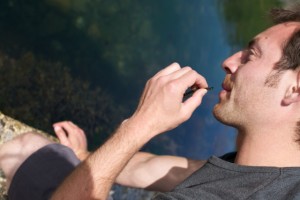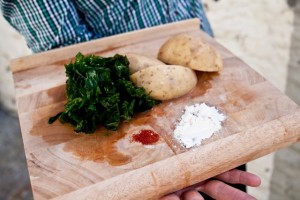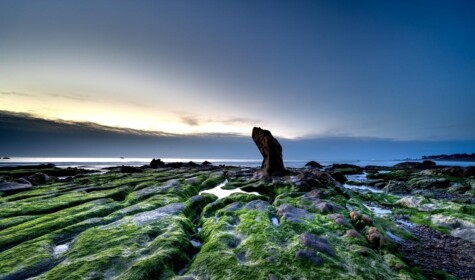If you wander down the aisles of any major supermarket, you could be forgiven for getting the impression that we are a nation obsessed with foods that claim to have special healing, weight loss or energy boosting properties. Goji berries, aloe vera, guarana, quinoa are now household names, and are transported at great expense from the ends of the earth to make us slimmer, stronger, healthier and more virile. However, there is a food group – much closer to home – that is packed with nutrients, abundantly available and best of all, free.

Of all the varieties of seaweed found on UK shores, only a handful are really worth bothering with. These include Laver, Sea lettuce, Dulse, the Gutweeds and to a lesser extent, Kelp. We’ve experimented with quite a few in our time but have come to the conclusion that the softer more delicate varieties like the ulvas taste the best. These bright green seaweeds are easy to find and don’t need too much preparation before they can be cooked. While the bright green seaweeds are the best for eating there is also something to be said for the achievement of making Laverbread, which involves a marathon 5 hour cooking session, which is not just delicious but research shows can be used to treat flu.

As well as sand you’ll also find lots of other goodies mixed in with seaweed. Some like sandhoppers are welcome bits of flavour and protein, others like bits of shell and stones are not. Before you cook with the seaweed take the time to rinse it again, fill a large bucket or sink with water and swirl the seaweed around to dislodge anything in-between the fronds. Use several refills of fresh water to ensure the highest chance of success.
Now decide what to do with it. Bright green seaweeds can be dried and deep fried for a couple of seconds to make a real crispy seaweed, then sprinkle equal amounts of salt and sugar over the top for seasoning. Those big kelp fronds can be used to season soups and stocks, simply add when cooking and remove before serving. Laver can be cooked down to a paste and teamed with bacon and oatmeal for the quintessential Welsh dish Laverbread. You can also dry the more delicate seaweeds and add to salads or use as garnish, they have a characteristic taste of the sea.
One of our favourite recipes when we were on the road filming the Three Hungry Boys was the seaweed rosti. This hearty dish is quick and simple to make with very few ingredients and definitely fills a hole. See recipe below.
Ingredients
– A 50:50 mix of grated potato and seaweed. We recommend either sea lettuce or gut weed, avoid the stringy tough seaweed.
– Enough flour (about a table spoon per potato) to bind the mixture
– 1 egg per 2 large potatoes
– Salt and pepper
– Oil for frying
– Try a chopped red chilli or some paprika for extra flavour and colour.
Instructions
1, Peel and grate the uncooked potato. Set aside.
2, Using an equal amount of seaweed (to potato), boil in salted water in the largest pan you have for 1 minute. This softens the seaweed but also allows any sand or sand hoppers to separate and fall to the bottom.
3, Remove the seaweed using a slotted spoon and drain excess water, use kitchen tool to absorb the last of the moisture.
4, Place potato, seaweed, flour, seasoning and extras (egg, chilli, paprika) into a bowl and thoroughly mix. Add extra flour if too wet until a firm patty can be formed.
5, Make patties as thin as possible (1cm is ideal) and fry in oil until golden brown on each side.
6, Serve while still hot with either sour cream or mayonnaise, this also works really well with smoked mackerel (line caught of course).



